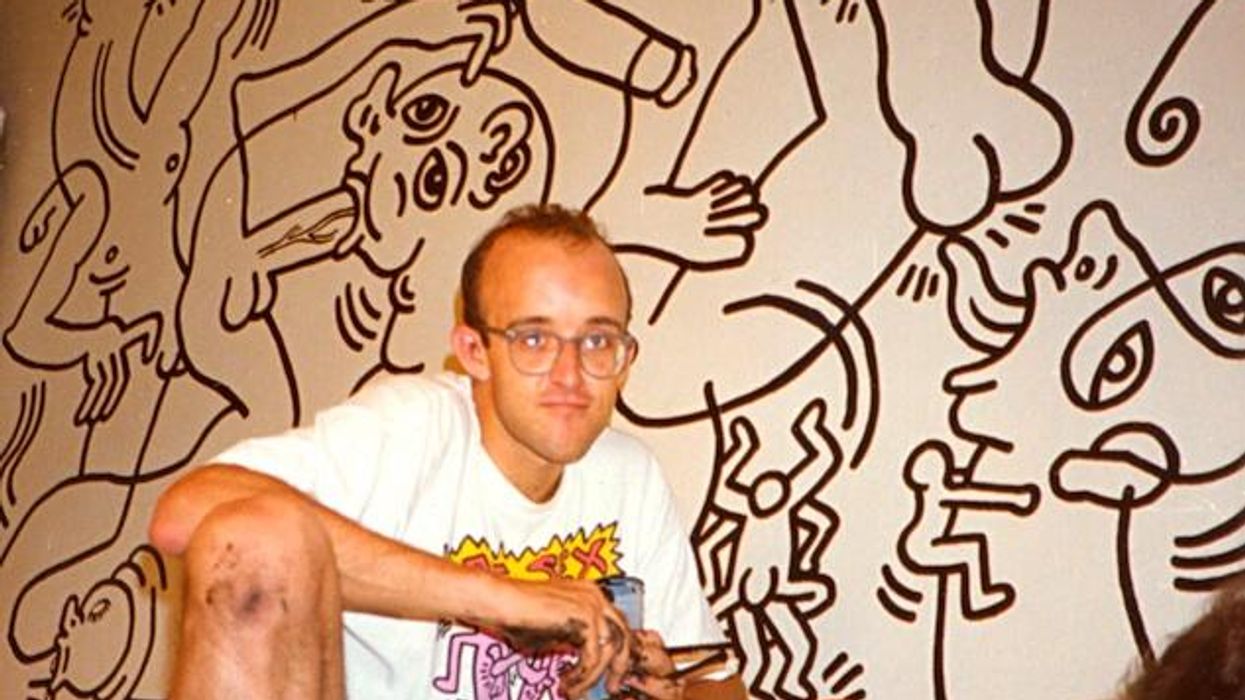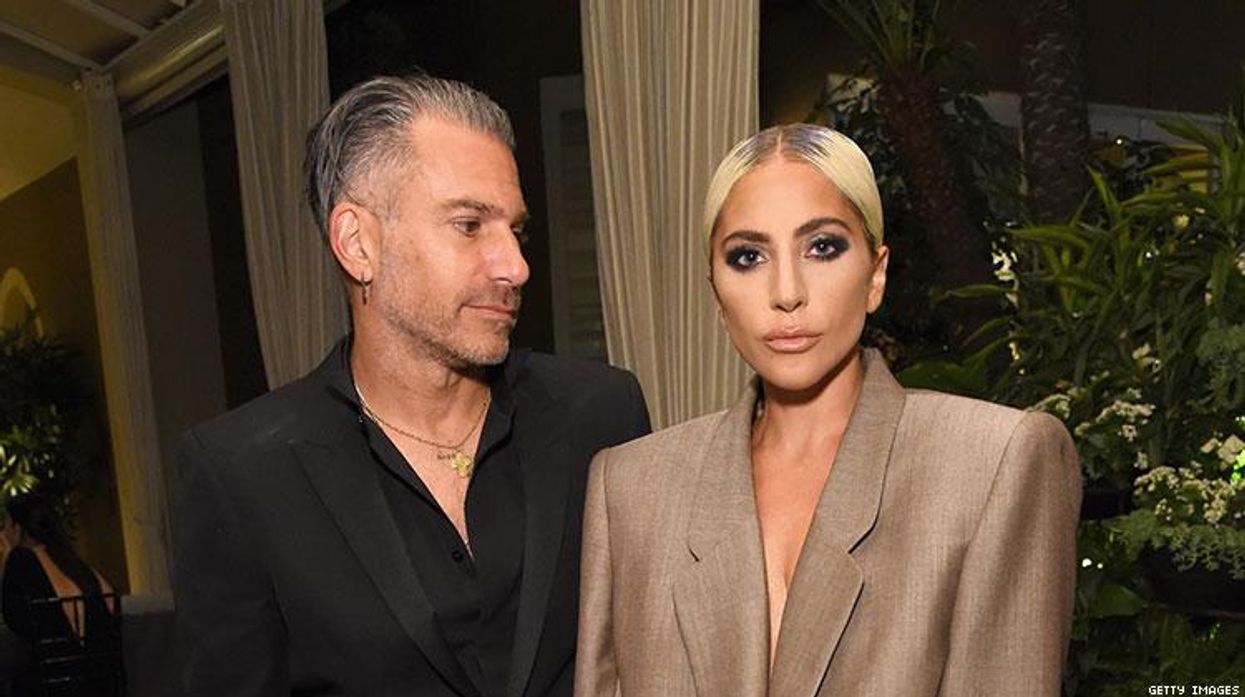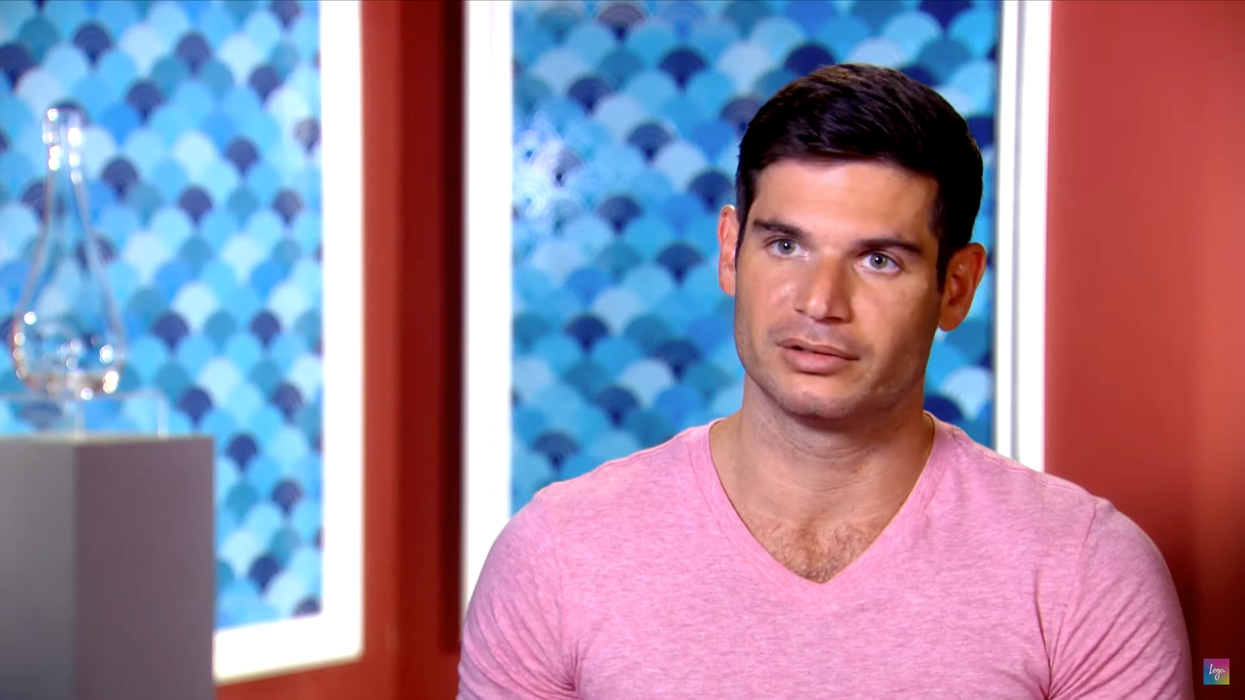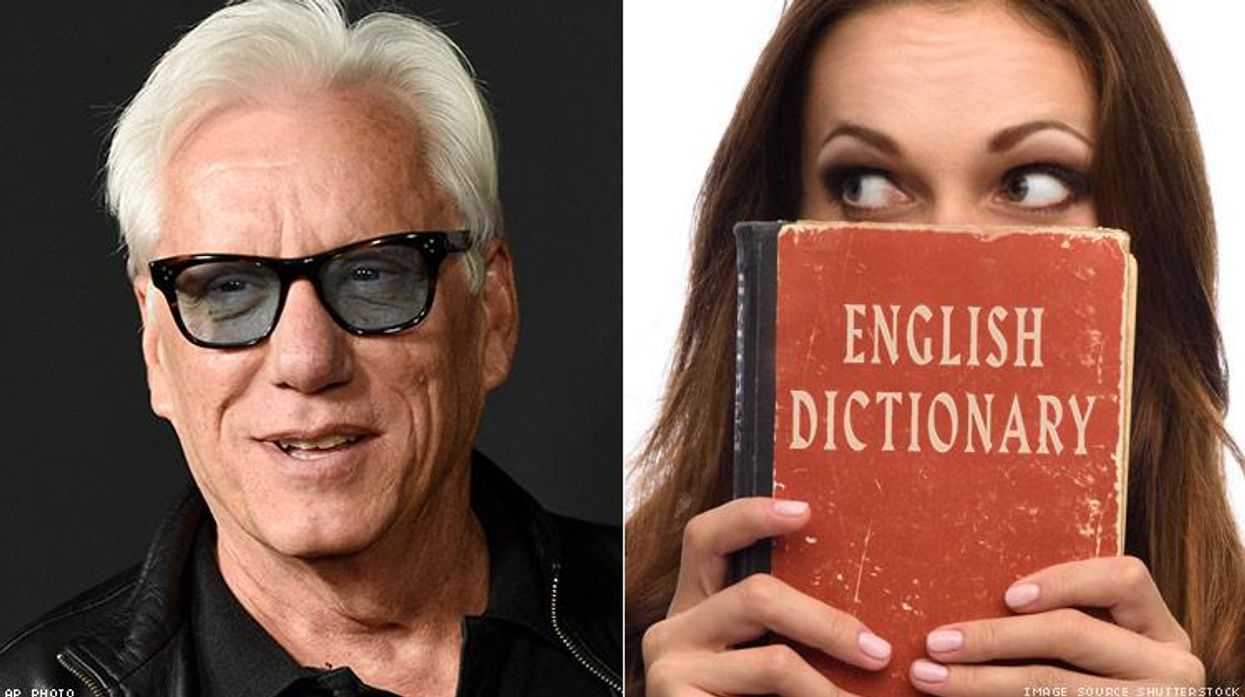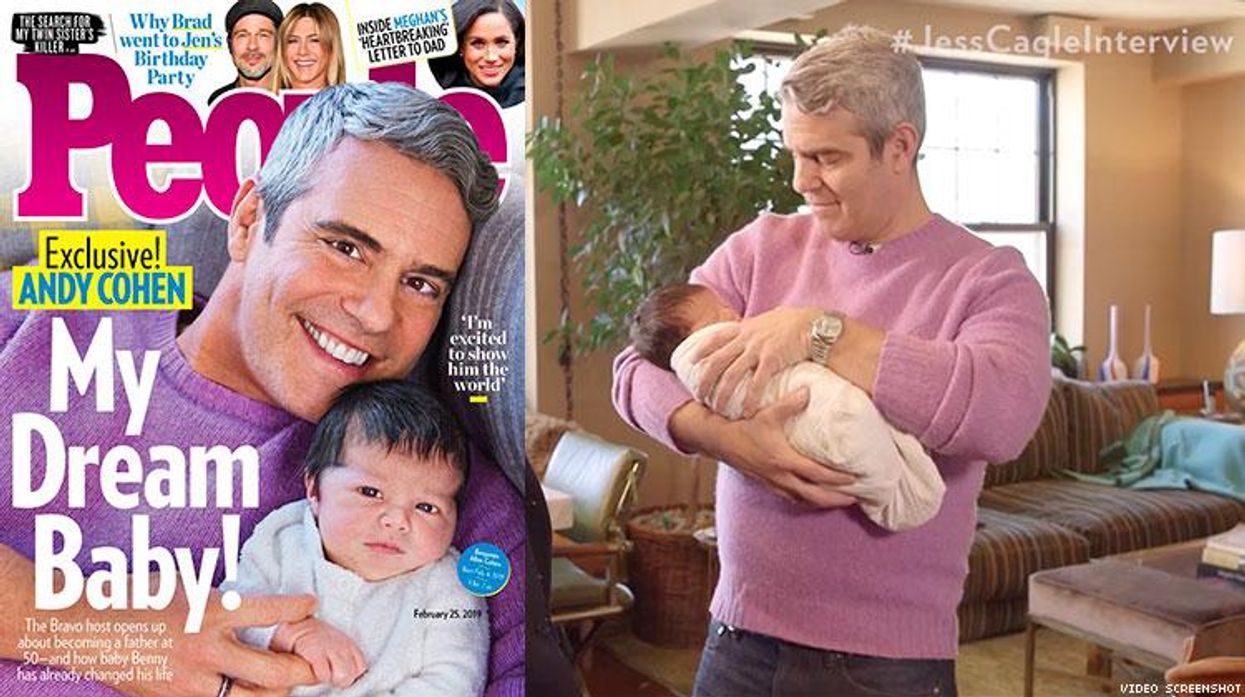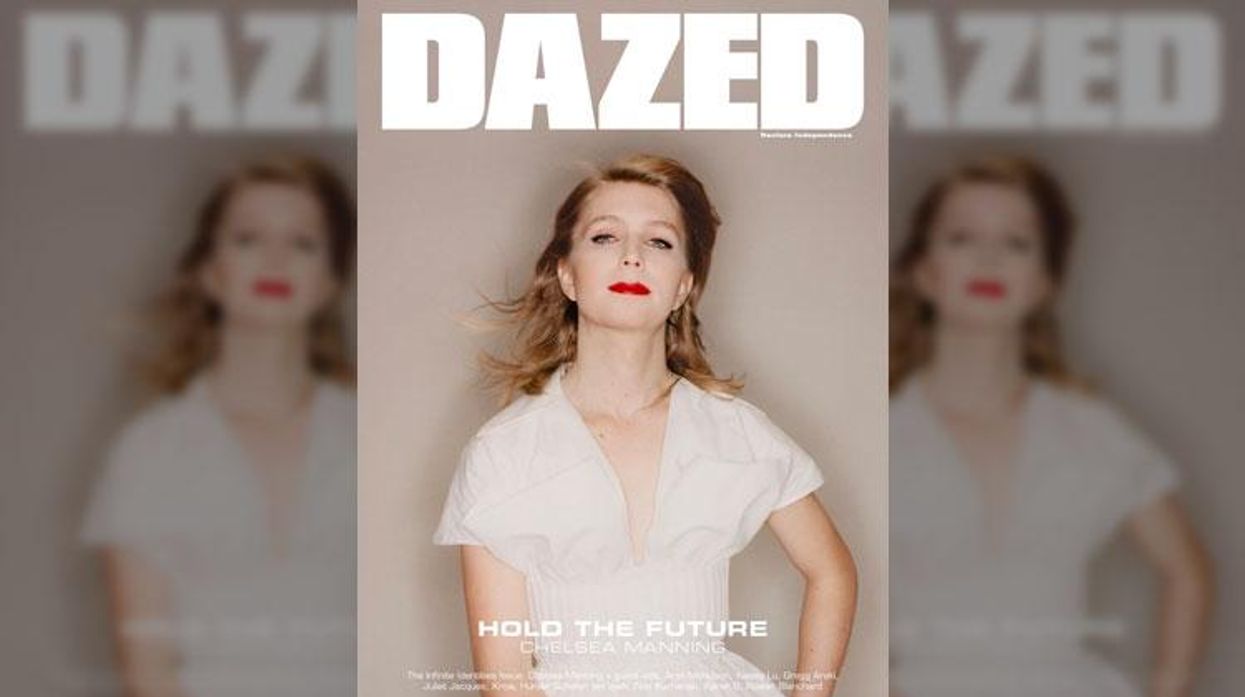Artist Keith Haring's work is shown in a lot of exceptional places; the late painter even has a retrospective launching this month at the Brooklyn Museum. But once slightly unexpected venue is also putting its Haring collection on display this week--a downtown Manhattan restroom.
It's not just any bathroom that Haring, who died in 1990, chose to decorate, however, it's the second-floor men's room at New York's Lesbian, Gay, Bisexual & Transgender Community Center. In 1989, Haring covered the loo with the mural, called "Once Upon A Time," for The Center Show, an art exhibit celebrating the 20th anniversary of the Stonewall Riots.
The room that Haring painted the racy, sex-charged mural in is no longer a bathroom--it's now the Center's meeting room--but that doesn't mean the mural is any less loved. It was recently restored and will be unveiled in a private ceremony Tuesday, kicking off a month-long series of events celebrating Haring and his life. We caught up with Glennda Testone, executive director of The Center, to find out more about the mural, its meaning, and having what might be the most valuable bathroom in New York.
OUT: What was Haring doing painting in the men's room?
Glennda Testone: Keith Haring was one of 50 artists invited to create site-specific works in the Center in honor of the 20th anniversary of the Stonewall Riots. The exhibit, known as The Center Show, was curated by Barbara Sahlman and the late Rick Barnett and opened on June 1, 1989. Each artist was able to select the area of the building where he or she wanted to work, and Keith chose the second floor men's bathroom.
Was the mural ever in danger of being painted over or scrapped?
The original agreement with the artists was that the exhibit would be temporary, but the outpouring of creativity was so intense that the Center decided early on that as much of the work should be preserved as possible. From the beginning, the Haring mural took on a particular prominence among the work in the building. A running joke in the 1990s was that the second floor men's room was worth more than the entire building.
Eventually the Center was able to raise the funds to renovate the building and bring it into compliance with City building codes. Among other things, that meant creating new bathrooms and re-purposing the old bathroom spaces. The Keith Haring bathroom needed special treatment. First, it had to remain a public space so that the mural would be as available for viewing by the public as possible. It also meant changing the room as little as possible. The toilets, sink and partitions were removed so that the room could accommodate meetings, but the tile walls and floor were kept, and the pipes and ducts were left in place, even though they no longer functioned. We also knew that the mural would need special protection during construction and were fortunate that the Haring Foundation arranged for the mural to be recorded with a full-scale tracing and protected before construction started in late 1998.
What makes this mural a special piece of Haring work?
Art experts can talk about the mural in terms of technique and how it fits into the full body of work that Keith produced. Here at the Center what we see is a joyful, uninhibited expression of gay male sexuality, created by a major gay talent, and tinged with a poignancy expressed by the title, "Once Upon a Time." In that piece, Keith managed to comment on gay liberation, sexual liberation and the immensity of the AIDS epidemic all at once--not long before he himself was claimed by the disease.
People come from all over the world to see the mural. The Center is proud to be the location of this unique piece of art and is committed to preserving it so that people can continue to be moved and inspired by it.
What was the thinking behind restoring it?
In one of those wonderful serendipitous moments, the Center was approached by Mark Fletcher and Tobias Meyer, who not only appreciated the artistic value of the Haring mural, but were willing to take the next step: provide the funds to protect and conserve it. They introduced the Center to the firm of Rustin Levinson Art Conservation Associates who worked on the mural in October 2011.
How difficult was that process?
The conservators, led by Harriet Irgang Alden, had a lot to figure out. The mural was painted on regular wall paint over old plaster, which was not in the best of shape to begin with. You can see today places where Keith painted over cracks. Harriet and her team had to test the underlying paint, the condition of the plaster and how well the paint was adhered to the plaster, the type of paint that Keith used, and more. Ultimately, they cleaned the entire piece, one square inch at a time with pencil-sized swabs dipped in a vinegar solution, and they used a special process to stabilize areas where the wall paint had started to separate from the plaster.
And there is more to do. The Center is looking for support for Phase 2 of the conservation, which includes restoring the wall finish around the mural, repairing holes, applying ultraviolet screening film to the window and replacing the door so that it causes minimal vibration.


